The Ministry of Defence has awarded BAE Systems contracts valued at more than £220m to deliver advanced synthetic training for pilots training to fly Typhoon.
The firm say in a release:
“Under the Typhoon Future Synthetic Training (TFST) contracts, BAE Systems is leading work to deliver ten high fidelity, immersive simulators, together with highly-secure state of the art training facilities at RAF Coningsby in Lincolnshire and RAF Lossiemouth in Moray. The new training environments will be linked together providing an integrated environment for pilots to train and carry out complex combined training exercises using real world mission software and tactics.
The investment by Defence Equipment and Support, the MOD’s procurement arm, reflects the Royal Air Force (RAF)’s ambition to increase its use of synthetic training, delivering cost, time and sustainability benefits over live training. This technology will also provide students with a more complex and secure training experience tailored to the individual which are often difficult to achieve in live training environments.”
Richard Hamilton, Typhoon Programme Director, Europe, BAE Systems’ Air Sector, said:
“We pride ourselves in delivering world-class training capability as we understand how critical it is to deliver the highest quality skills and capabilities to the frontline. This contract builds on existing work to deliver synthetic training to the RAF’s Typhoon Force, which will eventually enable pilots from different locations to fly virtual missions together and provide the ability to ‘plug into’ other assets across air, land and sea. The investment will deliver a number of valuable operational benefits for the RAF, alongside the positive impact that the increased use of synthetic training will make to reduce carbon emissions. With 9.6 tonnes of carbon saved by every synthetic flight, it will help reduce the current carbon footprint of live training, supporting the net zero ambitions held by our customers and ourselves.”
The firm say that the contract will support approximately 120 jobs in the delivery of new infrastructure at two RAF bases, with a further 60 engineering jobs sustained at BAE Systems and many more with a number of specialist UK companies throughout its supply chain.
“BAE Systems has significant experience in providing world-leading training capability for the UK and international air forces throughout the training pipeline including the classroom, synthetic and live environments. The Company works with customers to provide the best training services to meet their needs, across the training spectrum, from identifying and recruiting students and providing them with the foundation skills required to succeed, to delivering state-of-the-art facilities to provide effects-led training.
Working with industrial and academic partners, the Company integrates world-class innovative technologies – such as virtual assistants, data analytics, single synthetic environments and artificial intelligence – into next generation training solutions, such as simulators. BAE Systems delivers training programmes and capability output for the world’s leading military forces, taking students from the classroom to the frontline, and delivering around the clock training capability.”


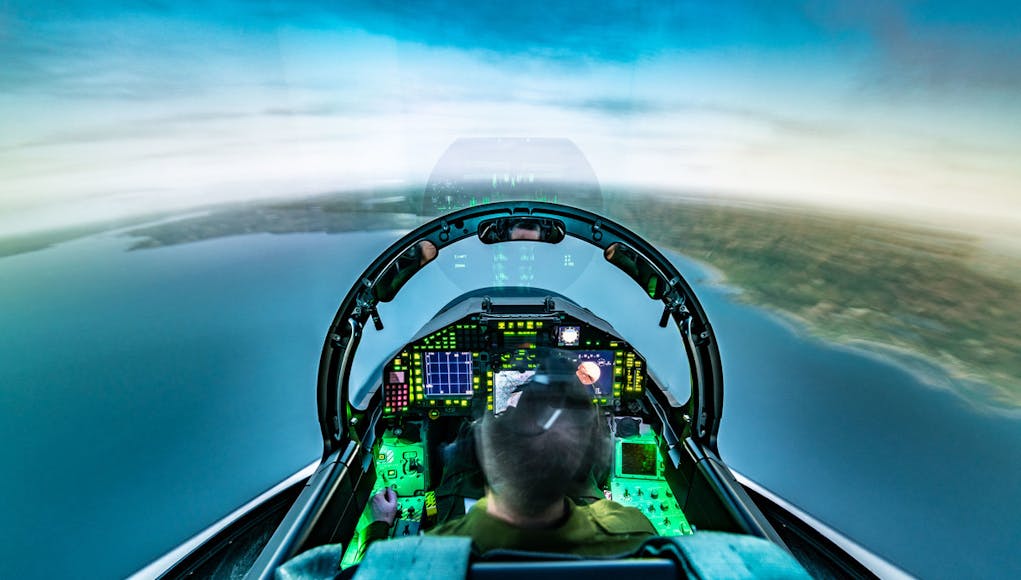
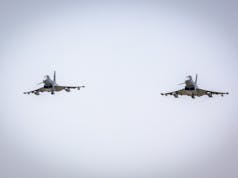




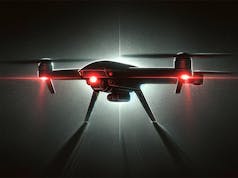


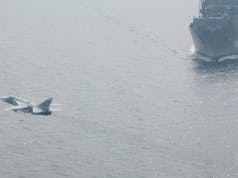
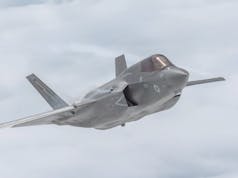

There is no substitute for in the cockpit experience.
Retaining situational awareness under high g, under physical demands, the disorientating effect of bright sunlight swinging around you, dazzling you. Manipulating cockpit controls under these conditions is totally different in the real world, not everything can be tied to HOTAS and what you do in a sim may be impossible in the real world.
Sims have their uses, they are fantastic for learning process, checklists and systems. They will never be a full replacement for in cockpit training though. Anyone who thinks they can be has never flown before.
The driving force is cutting spending not improving training.
Couldn’t agree more. This looks like cuts to actual flying hours to me. I always assumed that there was a minimum number of ‘in air flying hours’ that pilots were required to complete to remain proficient – something which the old Eastern bloc couldn’t match, supposedly giving our pilots the edge so to speak.
Eastern bloc might be gone, but two big threats still exist!!
Along with completely culling the aggressor squadrons.
Our defence budget was supposed to have been increased but I cannot see a penny of spending anywhere to reflect it!
Have you flown before? Are you a Typhoon pilot? have you experienced how these new sims operate? Do you know how and why the RAF are using them?
Yes I’ve flown before. Have you?
Yes many times. Doesn’t really answer my question though. SIMs enhance training, they are not to replace the real thing, but to offer the ability to practice complex scenarios without wasting flying hours. Crews can practise flying with 20 other aircraft in a package for example before heading out to a Red Flag exercise. They can link up with other stations and practice flying together to develop new tactics ect. Upgrades to the Typhoon are also uploaded to the SIM, so flying hours are not wasted getting up to speed with a new radar mod, or HOTAS configuration or a defensive aids software drop. Back in the day, this had to be done in the air, wasting flying hours that could be put to better use. They even have SIMS on the QE for F35 crews. SIMS are not to replace, but complement training. And greatly help enhance the experience aircrews can access. You are correct in saying flying the real thing can never be replaced with a SIM, but they offer a lot of options for todays aircrew. And they can use the available flying hours to much better use. lt’s also worth noting, flying hours haven’t been reduced.
Evening Robert, I agree that the RAF haven’t stated that flying hours have been reduced, does not the last 2 sentences in para 4 (reducing carbon footprint to net zero ambitions) allude to the fact that will be? I don’t know, perhaps I’m reading it wrong, just my take on the article.
A few similarities with F1 that has capped team budgets and testing hours. Whilst early simulation was much about the graphic realism due to limited software and hardware, the current generation is simulation of all the vehicle systems and highly accurate physics models that have become a development tool. F1 can involve multiple G turns so some way off fully acrobatic aircraft, never mind thrust vectoring fighters. So some hydraulic hints of G-force for context are never going to replace the experience of G suits and turns at the edge of trained human performance. Always makes me laugh that the general public wildly underestimate the fitness required for top level motorsport, and I guess the same will be true of fast mover aircrew. Add in the rate of change to the systems and sensors, the ability to train whatever the weather should lead to life saving excellence. Let’s hope so.
While potentially looking to axe 53 Tranche 1 Typhoons with more than half of the airframe hours left? leaving a balance of 67 Tranche 2, and 40 Tranche 3 Typhoons.
Do more with less seems to be the goal these days sadly.
https://www.janes.com/defence-news/news-detail/uk-to-retire-tranche-1-typhoons-with-more-than-half-of-airframe-hours-remaining
I don’t think we’ve ever had so few fighter/strike assets in our inventory. It’s not as if you can suddenly ramp up production and start churning out 20 a week should the need arise!
What’s that when the Tranche 1s go, 6 sqns of Typhoons and 1 1\2 of F35B’s! Still, everything will be fine once we get all our drones up and running……
Typhoon are 7, if counting 12 Sqn with Qatar joint ops. I don’t include the OCU or 41 Sqn either.
What are we realistically looking at Daniele, 60-70 front line Typhoons, with the rest in storage/maintenance! It’s definitely not many, just glad things are relatively quiet in the world at the moment….
Page 12
“There are three tranches of Typhoon currently in service and it is the oldest, tranche 1 aircraft, which are to be retired.
The RAF currently has 139 Typhoons, of which 101 are in service, as of 1 April 2020, 30 including 40 tranche 3 aircraft.”
https://researchbriefings.files.parliament.uk/documents/CBP-9188/CBP-9188.pdf
Ta.👍
How many in the 2030s!
“Answering a question in the House of Commons on 13 September, Minister of State for Defence Jeremy Quin said that uncrewed aircraft are set to replace the Royal Air Force’s (RAF’s) Eurofighter Typhoons in the air-to-air role from the mid-2030s, supported by the Tempest fighter now being developed as part of the wider Future Combat Air System (FCAS).”
https://www.janes.com/defence-news/air-platforms/latest/uk-touts-uncrewed-air-defence-from-mid-2030s
It’s pathetic. Multi role aircraft are great force multipliers but with so few and a number inevitably tied to air defence it leaves us with practically nothing of any value to use in a ground attack role.
Add in no specialist air defence suppression weapon, no specialising electronic warfare capability, no long range anti ship weapons.
The RAF is effectively good for defending UK airspace and dropping a handful of bombs on caves and pickup trucks.
We have an army whose actual combat force could fit in a non league football ground, with no modern armoured capability.
The state of the countries military is appalling!
The only branch with any credibility left is the navy, and that’s borderline with the distinct lack of any remotely modern anti ship capability.
That type of comment shows that you know very very little about our Armed Forces.
“distinct lack of any remotely modern anti ship capability.”
Aside from Spearfish?
And Sea Venom & Martlet, and Stingray torpedoe. And Harpoon until 2023. SPEAR 3 will also have anti ship capability. And Sea Captor has a secondary anti surface capability.
No specializing EW capability?
JEWOSC might have something to say about that.
Our EW and Cyber capabilities are classified, and rightly so.
We have capability gaps, as do most nations, but I think you go too far.
22 of the Tranche 1 Typhoons were withdrawn years ago, mainly the 2 seat version’s.
Why is that? Thought 2 seaters would be useful for close sir support, electronic attack, having gunner in back.
Second question? I remember the raf saying due to cuts we wouldn’t get the Mauser, is that still the case?
They had to strip most of the 2 seaters for parts, plus with the advances in SIM technology, the need for 2 seaters has reduced. Typhoon is also designed to be operated with one pilot, and the sensor fusion has greatly improved over the years reducing the pilot workload, allowing ever more complex operations to take place. And yes, the cannon is fitted on the starboard side. The cannon barrel is hidden behind a small piece of plastic to help reduce the radar cross section. The first round fired blows this out.
Have they bought P3D or DCS World? DCS has got a Typhoon study level sim module in development. Looking forward to that.